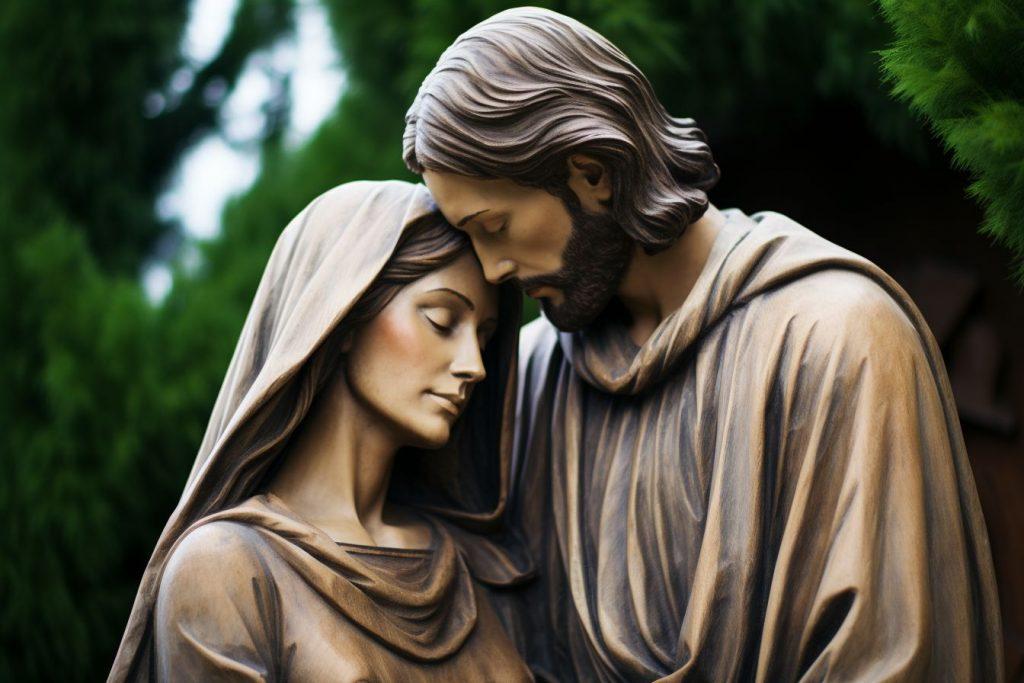Brief Overview
- The Catholic Church teaches that prayer is a vital way to communicate with God and grow in faith.
- There are five distinct forms of prayer recognized in Catholic tradition, each serving a unique purpose.
- These forms include blessing and adoration, petition, intercession, thanksgiving, and praise.
- Each type of prayer reflects a different aspect of the relationship between the individual and God.
- Understanding these forms helps Catholics deepen their spiritual life and align their intentions with God’s will.
- This article explores these five forms in detail, providing a clear and scholarly explanation rooted in Catholic teaching.
Detailed Response
Introduction to Prayer in Catholicism
Prayer holds a central place in Catholic life as a means of connecting with God. It is not merely a ritual but an expression of faith, trust, and love. The Catholic Church teaches that prayer is the raising of one’s heart and mind to God, a definition that emphasizes its personal and relational nature. The five forms of prayer—blessing and adoration, petition, intercession, thanksgiving, and praise—offer a complete framework for this relationship. Each form has its own purpose and reflects a specific attitude toward God. These categories are not rigid; they often overlap in practice. For example, a single prayer might include elements of thanksgiving and praise. The Catechism of the Catholic Church (CCC) provides guidance on these forms, particularly in sections 2626-2643. This article will examine each form systematically. By understanding them, Catholics can enrich their prayer life and grow closer to God.
Blessing and Adoration: Recognizing God’s Greatness
The first form of prayer is blessing and adoration, which focuses on honoring God’s majesty. In this type, the person acknowledges God as the Creator and source of all good. Blessing involves both God blessing humanity and humanity responding with praise. Adoration, a key aspect of this form, is the act of humbling oneself before God’s infinite power. This prayer can be silent, as in personal reflection, or communal, as in the liturgy. For instance, the Eucharist is a profound moment of adoration in Catholic worship. The Church teaches that this form lifts the human spirit toward God. It is rooted in the recognition of God’s holiness, as seen in Psalm 95:6, which calls believers to bow down in worship. According to CCC 2626-2628, blessing and adoration set the foundation for all other prayer. This form reminds Catholics of their dependence on God.
Petition: Asking for Personal Needs
The second form, petition, involves asking God for help with personal needs. This type of prayer expresses trust in God’s providence and mercy. Catholics believe that God invites them to bring their requests to Him, as a loving Father. Petition can include asking for forgiveness, strength, or material needs. It is not about demanding but about seeking God’s will. Jesus Himself encouraged this in Matthew 7:7, where He says to ask and it will be given. The Church teaches that petition should be humble and persistent. CCC 2629-2633 highlights how this prayer reflects human reliance on God. For example, the “Our Father” is a model of petition, asking for daily bread and forgiveness. Through petition, Catholics align their desires with God’s plan.
Intercession: Praying for Others
Intercession, the third form, is prayer offered on behalf of others. This type reflects the communal aspect of Catholic faith, where believers support one another. Intercession can be for the living, the dead, or even the world at large. It mirrors Christ’s role as the mediator between God and humanity. The saints, too, are seen as intercessors in Catholic tradition. For instance, praying for a sick friend or for peace in the world falls under this form. The Church encourages this practice, as seen in 1 Timothy 2:1, which urges prayers for all people. CCC 2634-2636 explains that intercession unites the praying person with Christ’s own prayer. It fosters charity and solidarity among believers. This form shows that prayer is not selfish but outward-looking.
Thanksgiving: Gratitude for God’s Gifts
The fourth form, thanksgiving, is the act of giving thanks to God for His blessings. This prayer acknowledges that all good things come from Him. Catholics are called to gratitude in all circumstances, not just in times of abundance. The Eucharist, meaning “thanksgiving” in Greek, is the ultimate expression of this form. Thanksgiving keeps the heart open to God’s generosity. It is modeled in 1 Thessalonians 5:18, which instructs believers to give thanks always. The Church teaches that this prayer transforms one’s perspective on life. CCC 2637-2638 notes that thanksgiving flows naturally from faith. For example, a Catholic might thank God for family, health, or salvation. This form strengthens trust in God’s ongoing care.
Praise: Glorifying God for Who He Is
The fifth form, praise, glorifies God simply for being God. Unlike thanksgiving, which focuses on what God does, praise honors His essence and perfection. This prayer rises above human needs or circumstances. It is an act of pure love and reverence. The Psalms are filled with examples, such as Psalm 150, which calls all creation to praise God. Praise can be expressed in song, words, or silent awe. The Church sees it as the highest form of prayer, as noted in CCC 2639-2643. It reflects the joy of knowing God’s greatness. In liturgy, the “Gloria” is a classic prayer of praise. This form lifts the soul beyond itself to focus entirely on God.
How These Forms Work Together
The five forms of prayer are not isolated but interconnected. A single prayer might begin with adoration, move to petition, and end with praise. This fluidity shows the richness of Catholic prayer. The Church teaches that all prayer flows from the Holy Spirit, guiding believers in each form. For example, the Mass includes all five: adoration in the opening rites, petition in the prayers of the faithful, and so on. CCC 2644-2649 emphasizes this unity in the life of prayer. Each form meets a different human need while pointing back to God. Together, they create a balanced spiritual life. Catholics are encouraged to practice all five regularly. This integration deepens their relationship with God.
Practical Examples in Daily Life
Applying these forms in daily life is straightforward for Catholics. Adoration might occur during quiet time before the Blessed Sacrament. Petition could be a morning prayer for strength to face the day. Intercession might involve praying for a struggling neighbor. Thanksgiving could be a family grace before meals. Praise might take the form of singing a hymn like “Holy God, We Praise Thy Name.” These practices ground faith in everyday moments. The Church offers tools like the Rosary, which blends several forms. CCC 2697-2699 encourages such habits of prayer. By living these forms, Catholics stay connected to God.
The Role of Scripture in Shaping Prayer
Scripture plays a key role in all five forms of prayer. The Bible provides words and inspiration for each type. For adoration, Psalm 8 marvels at God’s creation. In petition, Philippians 4:6 urges believers to present requests to God. Intercession draws from James 5:16, which calls for praying for one another. Thanksgiving echoes Colossians 3:17, giving thanks in all things. Praise fills Revelation 4:11, exalting God’s worthiness. The Church teaches that scripture enriches prayer, as noted in CCC 2652-2654. It roots prayer in God’s own revelation. Catholics are urged to let scripture guide their words to God.
Challenges in Practicing the Five Forms
Catholics may face difficulties in praying consistently. Distractions, doubt, or busyness can hinder adoration or praise. Petition might feel unanswered, leading to frustration. Intercession requires selflessness, which can be hard in selfish moments. Thanksgiving might falter in suffering. Praise can feel distant when faith wavers. The Church acknowledges these struggles but encourages perseverance. CCC 2729-2733 addresses how to overcome obstacles in prayer. Spiritual dryness is normal, but God remains present. Support from community and the sacraments helps sustain prayer.
Theological Importance of the Five Forms
Theologically, these forms reflect the nature of God and humanity’s place before Him. Adoration affirms God’s transcendence. Petition and intercession show His care for human needs. Thanksgiving recognizes His generosity. Praise honors His eternal glory. Together, they mirror the Trinity’s relational love. The Church teaches that prayer is a participation in Christ’s own communion with the Father. CCC 2564-2565 ties prayer to the mystery of salvation. It is both a gift and a response. This theological depth gives the five forms lasting meaning.
Historical Development of These Forms
The five forms have roots in Jewish tradition and early Christianity. Blessing and praise echo the Psalms and Temple worship. Petition and intercession appear in the prayers of the patriarchs. Thanksgiving grew from Jewish blessings over meals. Early Christians adapted these, as seen in the Didache and writings of the Church Fathers. The Catechism traces this evolution in CCC 2585-2589. Over centuries, the Church formalized these categories. The liturgy shaped their expression in Catholic life. They remain consistent across cultures. This history shows their enduring value.
Prayer as a Lifelong Practice
Prayer, in all its forms, is a lifelong commitment for Catholics. It evolves with age, experience, and faith. Children might focus on petition, while adults grow in praise. The Church teaches that prayer matures over time. CCC 2700-2704 describes this growth as a work of the Holy Spirit. Each form meets people where they are. Regular practice builds spiritual discipline. The saints model this dedication, from Teresa of Avila’s adoration to Francis of Assisi’s praise. Prayer sustains Catholics through life’s changes. It is a constant call to holiness.
Conclusion: Embracing the Five Forms
The five forms of prayer offer a complete way to approach God. They meet every human experience—wonder, need, love, gratitude, and awe. Catholics are invited to use them daily, alone or with others. The Church provides guidance through scripture, tradition, and the Catechism. Each form has a unique role yet connects to the others. Together, they strengthen faith and trust in God. By practicing them, Catholics live out their identity as God’s people. Prayer becomes a bridge between earth and heaven. It is both a duty and a joy. This framework ensures a rich and balanced spiritual life.
Signup for our Exclusive Newsletter
-

- Join us on Patreon for premium content
- Checkout these Catholic audiobooks
- Get FREE Rosary Book
- Follow us on Flipboard
Discover hidden wisdom in Catholic books; invaluable guides enriching faith and satisfying curiosity. Explore now! #CommissionsEarned
- The Early Church Was the Catholic Church
- The Case for Catholicism - Answers to Classic and Contemporary Protestant Objections
- Meeting the Protestant Challenge: How to Answer 50 Biblical Objections to Catholic Beliefs
As an Amazon Associate, I earn from qualifying purchases. Thank you.

